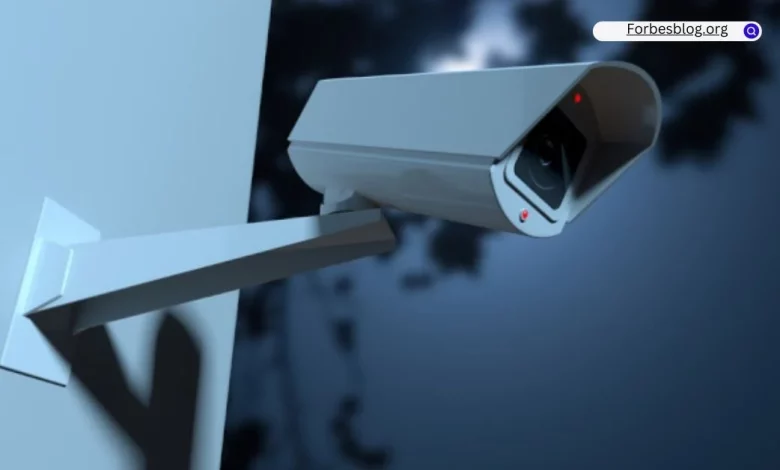10 Major Things To Check Out When Buying CCTV Cameras For Your Home Security

Cameras can be complicated. No one wants to admit it, least of all the companies making the cameras. But if you have ever tried to install a home security camera and found yourself baffled at the instructions or confused about what your camera did, then you are not alone.
The reason for most people’s confusion is a misalignment of expectations. Cameras are marketed and sold as if they are all the same. Whether they record, broadcast, move on their own, track motion, when you look at them you see “a camera” and nothing else.
We are here to dispel those expectations and bring your idea of CCTV cameras more in line with reality. So, let’s talk about CCTV cameras and what you should look for before buying.
Table of Contents
Recording Ability
This is what most people get their security cameras to do. They want to be able to set it up to record what goes on in their backyard, or garage, or somewhere. But this is a more involved task than you might think, and not every camera is up to it. The biggest issue is space.
Not physical space of where to put the camera, but how much digital space the camera has to store video, as well as how often that space is cleared out to store more video.
Streaming Ability
Security cameras often evoke the image of a security room full of screens that one can look at to see live feeds from all over a property. This is pretty unusual for a residence, but it is an option. The trick is getting a camera that is set up for it. Most are, after some tinkering.
But the easiest way to get that “security room” setup is by getting security cameras that transmit their video over wireless internet. These make it easy to set them up wherever you want.
Motion Sensitivity
There are two ways to use a motion-sensitive camera. The first is by having the camera only turn on or start recording when to detects motion. This is a good method for keeping the camera from recording constantly. The other is by using the camera to supplement an alarm system.
Most alarms come with good motion detectors, but cameras can make them even better.
Phone App Controllers
There is so much that you can only do if your cameras are controllable by a phone app. Like easily checking them while you are at work. Or even on your way to work if your hands are free.
Phone apps also help you resolve false alarms and respond to real alarms faster. You can set your camera up to record when you turn it on through the phone app or use the phone app to program its conditions for turning on automatically. In short, phone apps are highly convenient.
Pan, Tilt, and Zoom
These three words describe the different ways a stationary camera can move. Panning is side to side, tilting is up and down, zooming is in and out. Being able to do these things lets your cameras be smaller and more maneuverable, rather than big and bulky.
Field of View
On the other end of the spectrum from maneuverable cameras is cameras that can see all around them at once. You don’t need a camera that can move all over the place if it can see all over the place. The downside of these is that their recordings can be massive since their images are huge. But they make great motion detectors and reactive cameras.
Night Vision
This is not the make-or-break feature that most people might expect. Break-ins happen primarily during the day while people are at work, rather than at night. All the same, enough crimes happen at night that night vision is a worthy investment and something to think about.
Video Storage Method
The more you think about this, the more important it is. Does the camera have its video stored on an SD card plugged into the camera? Can an intruder just take that SD card out? Or is the camera wired into a computer where the video is recorded? What happens if that wire is cut?
Having a clear idea of your limitations and what they mean is critical.
Stealth or Lack of Stealth
There are two directions you can go with a security camera: Stealthy or noticeable. The advantage of stealthy is that an intruder does not know they are being recorded, meaning they will not change their behavior or try to damage the camera. If they do know they are being recorded, however, they might ditch their plan and run.
Get stealthy cameras if they are connected to an alarm, but noticeable cameras otherwise.
Weather Resistance
Most security cameras have weather resistance in mind, hence why they are made of thick, expensive plastic or metal. All the same, be sure to check and make sure that your cameras are rated for the weather that is regular in your area. Replacing them is its own headache.
Conclusion
Smith Thompson is a Celina home security company that can help you navigate all of this complexity. While it might all seem overwhelming now, the big thing to remember is that you are not looking for “the perfect camera” among a sea of dysfunctional products.
What you are looking for is a camera that suits your needs. For instance, you do not need a camera with motion sensor capabilities in a lot of cases. Motion sensing capability is important if you want it to record reactively or supplement an alarm system. These are common desires, but some people just want a camera that allows them to check on their home through their phone.
As we mentioned early, camera maneuverability is only necessary if you have a small field of view. Though you can also cover for a lack of maneuverability with more camera coverage.
Basically, what we are saying is that there are lots of ways to build a robust security system. So, do not worry too much if you do not have an idea what the perfect camera setup is yet.




